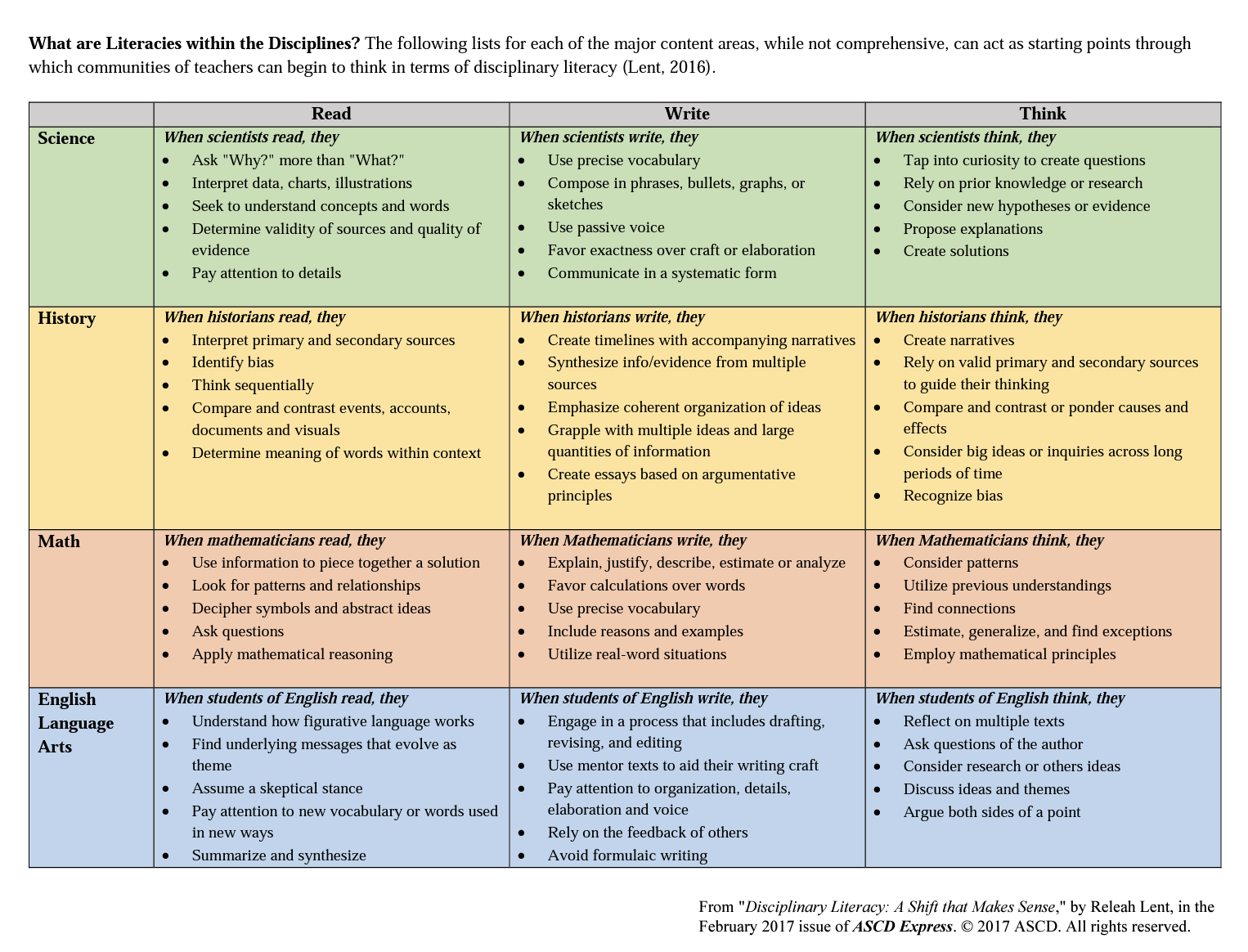Content Area Reading
Since the 1920s, experts have encouraged teachers to use content-area reading skills, which build students’ general comprehension and study skills across content areas of learning. Many generalizable strategies that have a strong research base such as KWL charts, SQ3R, word maps, Frayer Model, DRTA, morphological analysis, summarization, previewing, brainstorming, note talking, QAR, and Reciprocal Teaching are typically emphasized in content area teaching. Let’s watch as a high school teacher discusses how she uses Reciprocal Teaching in her classroom.
Discipline Specific Literacy Skills

Discipline-specific literacy skills is a developing idea in the literacy field. Although a small number of researchers started writing about them in the 1990s, their popularity really increased with the development of the Common Core standards in 2008-2009. Disciplinary literacy focuses on the ways literacy is used to create, disseminate, and critique information in the various disciplines. It focuses on the learning demands of a specific subject matter and the text types, structures, and features unique to the discipline that help to make meaning.
Researchers hope a shifting focus to particular literacy skills within specific disciplines may help teachers unlock content for students without being burdened with “every teacher is a teacher of reading.” Opponents point out that kids are not scientists, mathematicians, or historians and therefore instruction should focus on developing critical thinking skills that can be applied across disciplines. Perhaps there is room to advocate for both. If students lack general reading and writing strategies and have had minimal opportunities to apply their critical thinking skills, they may require a mix of general vocabulary and comprehension strategies as well as specific strategies to help them to analyze and understand text within particular disciplines.
Related Resources
Blog: Shanahan on Literacy


